This September, I fulfilled a lifelong dream when I visited Kogatende in the Northern Serengeti to witness the great migration. And it was one of the greatest experiences a wildlife enthusiast can ask for. A magnificent landscape dotted by a diverse range of wildlife, the Serengeti is a truly magical place that you can never get enough off.
The Serengeti national park, which was one of the first locations to be designated a world heritage site by UNESCO in the 70’s is now one of the world’s best national parks. It is now famous for its big cats as well as the migration.
The migration features almost 2 million wildebeest and hundreds of thousands of gazelle and zebra’s moving in patterns dictated by rainfall, in search of fresh water and grass rejuvenated by the rains, it is almost a race for survival. The migration also sees a lot of death every year, in the event that the animals are unable to make it to a location with sufficient food and water. Needless to say there are also predators following the migration, in order to take advantage of opportunities presented to them. This phenomenon encompasses both the Serengeti and the Maasai Mara.
Since rain is the indicator of a herd’s movement, it is advisable to study rainfall patterns before making a trip to study the great migration. While the herd is usually sighted in Kenya’s Masai Mara from April to late September. Recent years have seen a shortage of rainfall in this reason and this has thus forced the herds to migrate from their breeding grounds and into the northern Serengeti sooner than before. The rains usually last between September and April, the intensity of the rainfall generally increases as the season wears on. Climaxing with an intense downpour in April. Most wildlife resorts are not open during April. The zebra usually, arrive first due to their enhanced mobility.
This journey is perilous not only because of the lack of resources, but also due to the abundance of predators which range from leopards to hyenas, cheetahs, crocodiles and lions.
The Migration is all about action
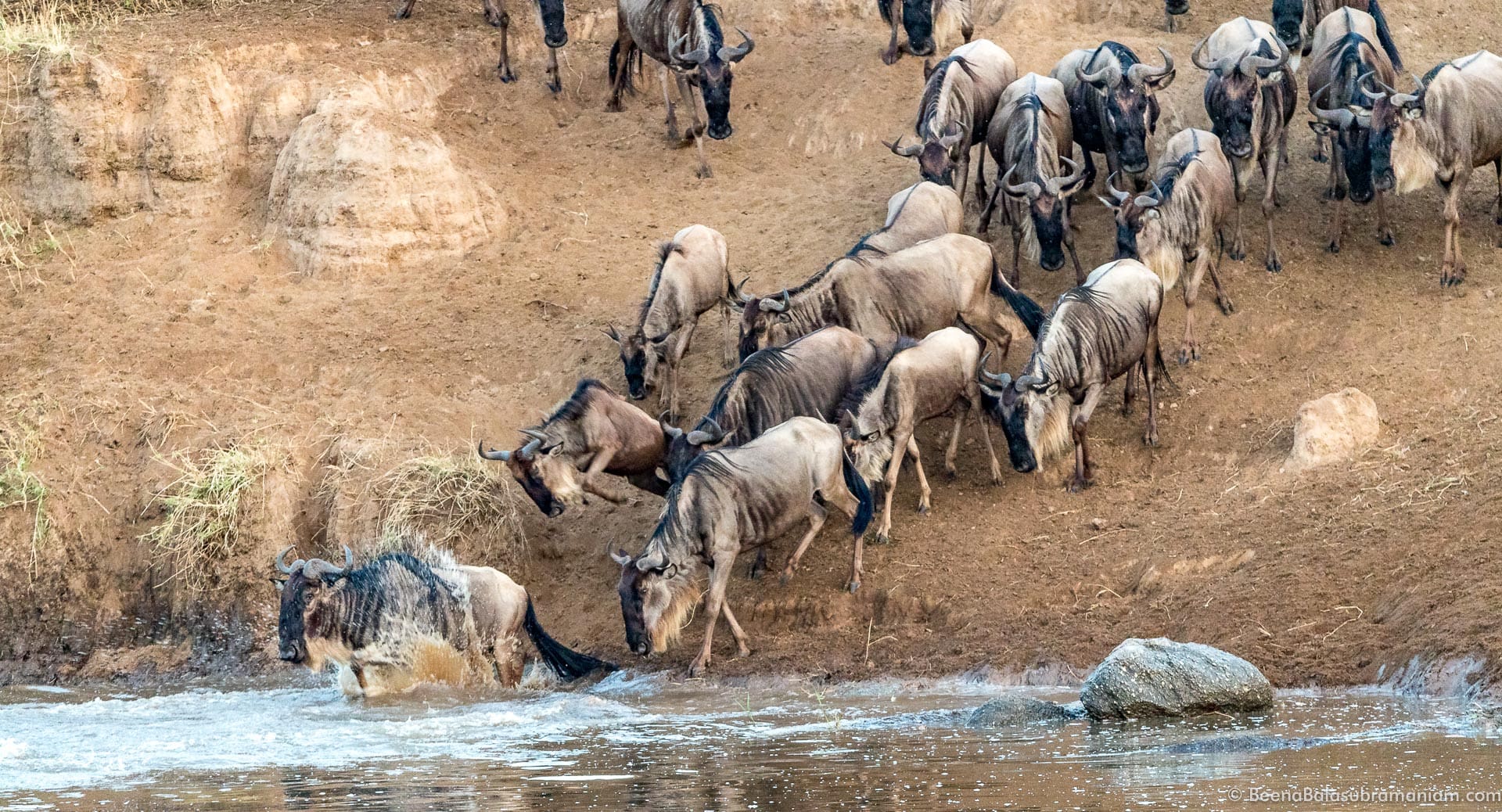
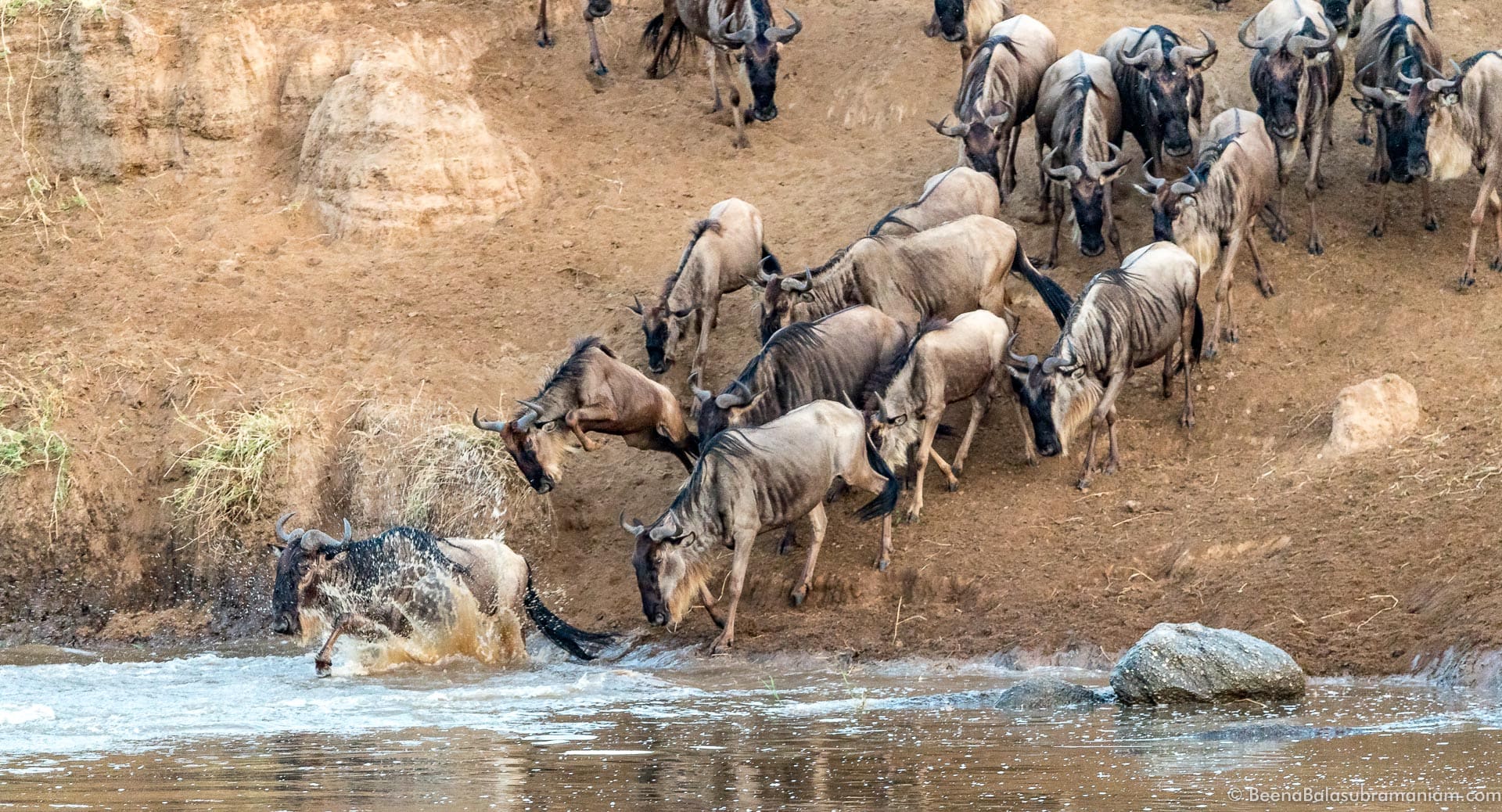
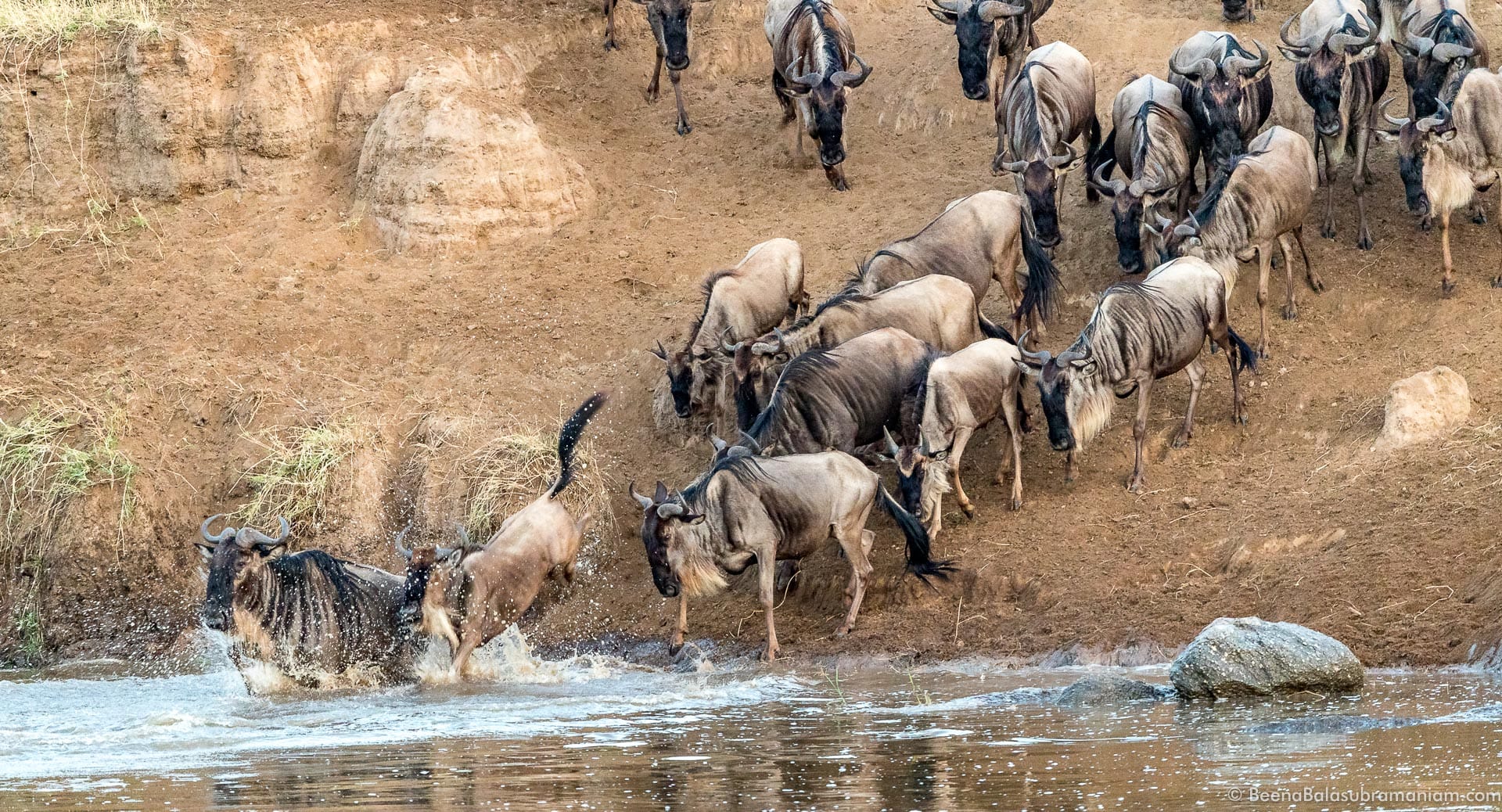
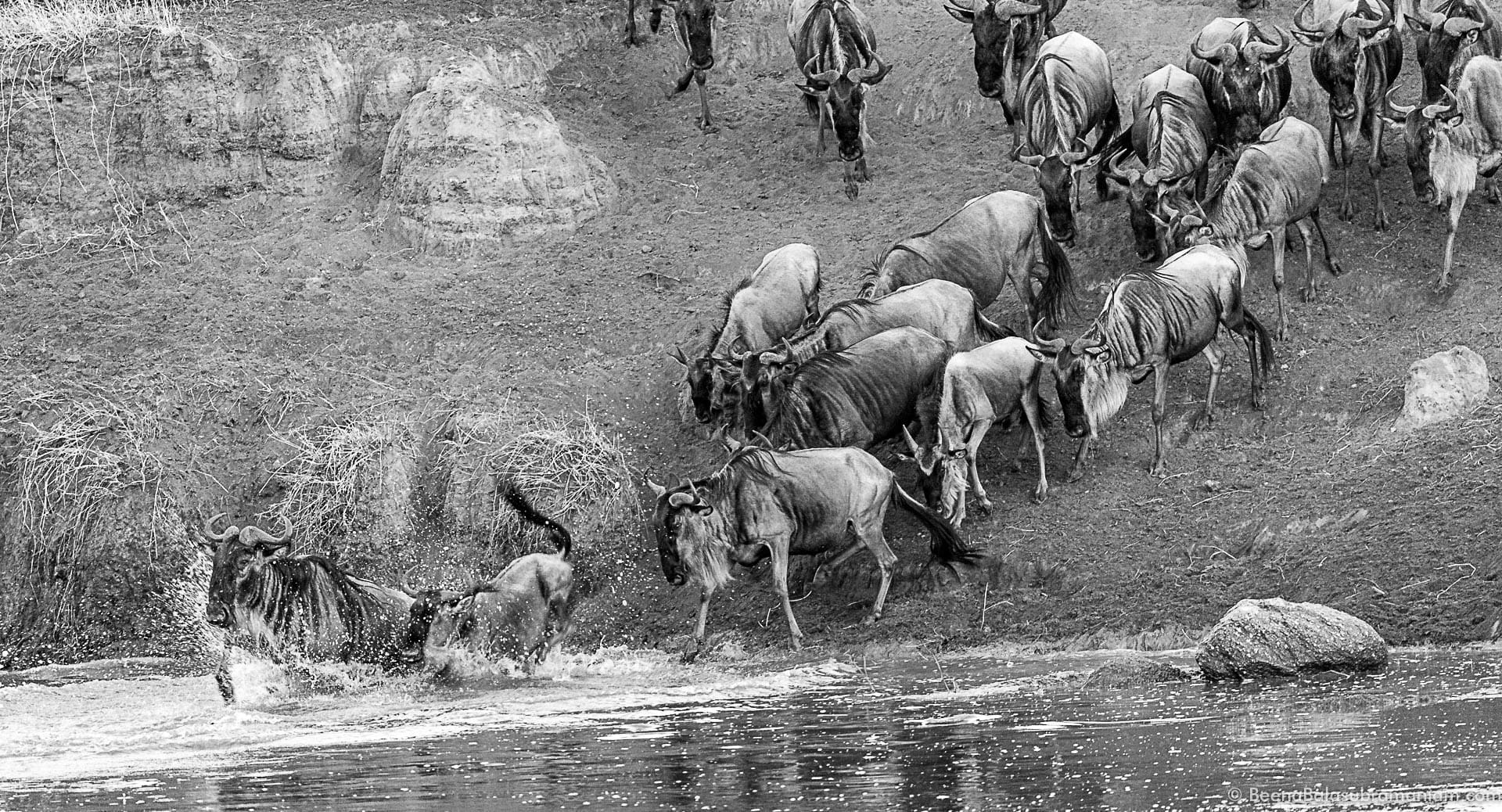
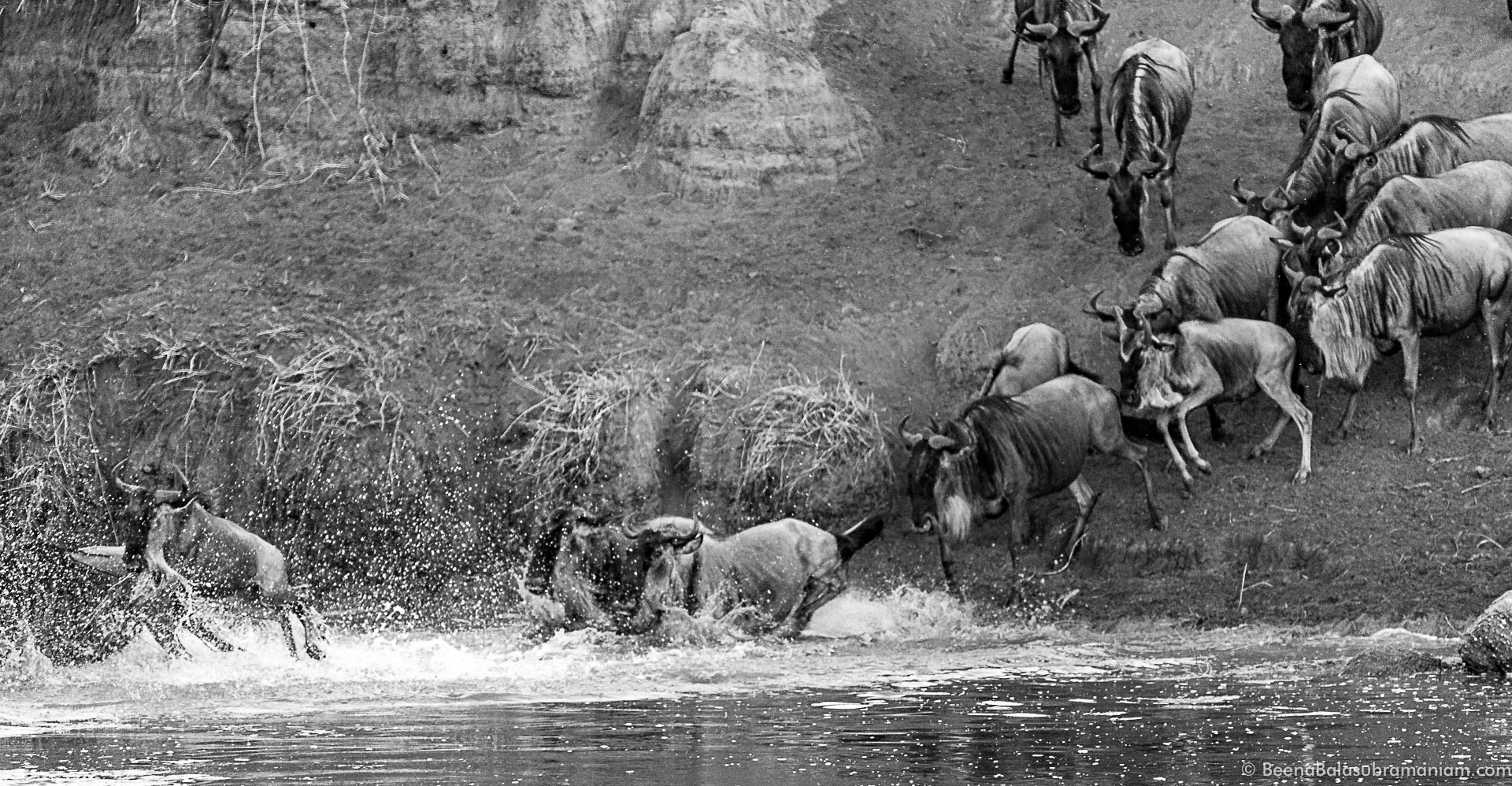
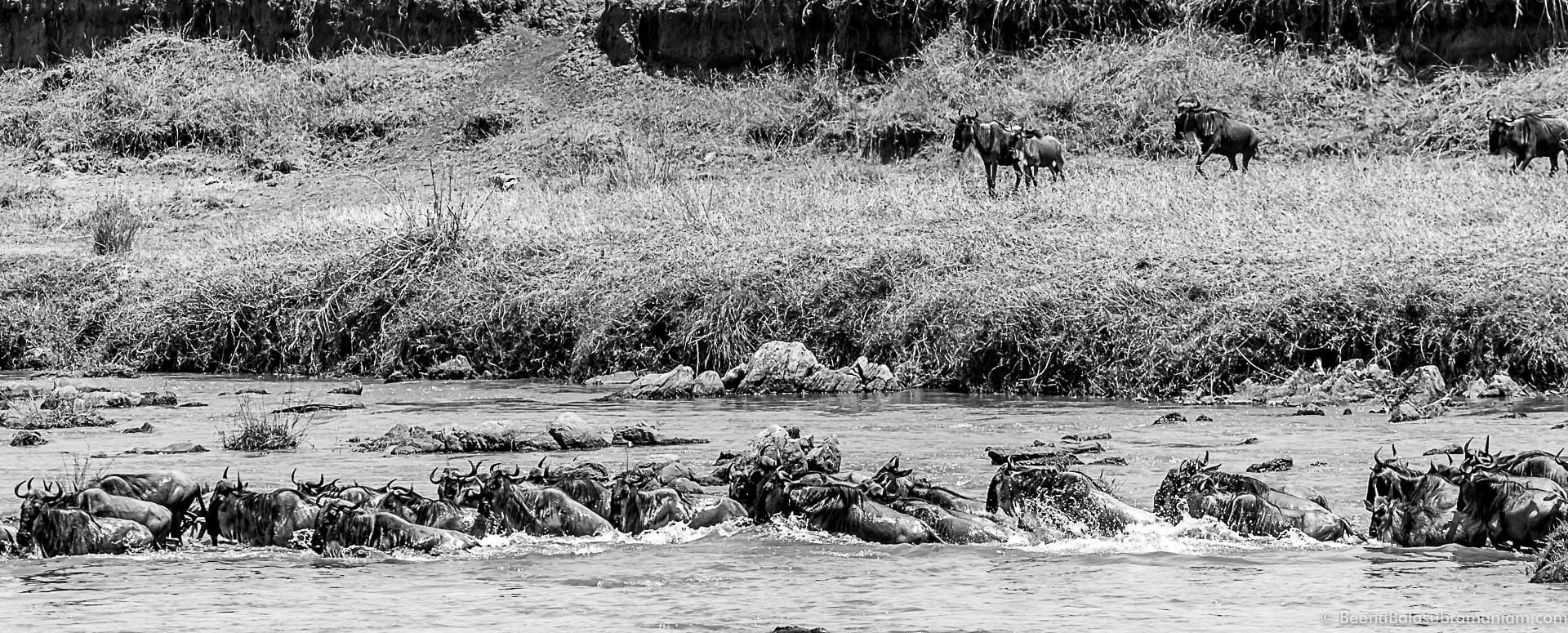
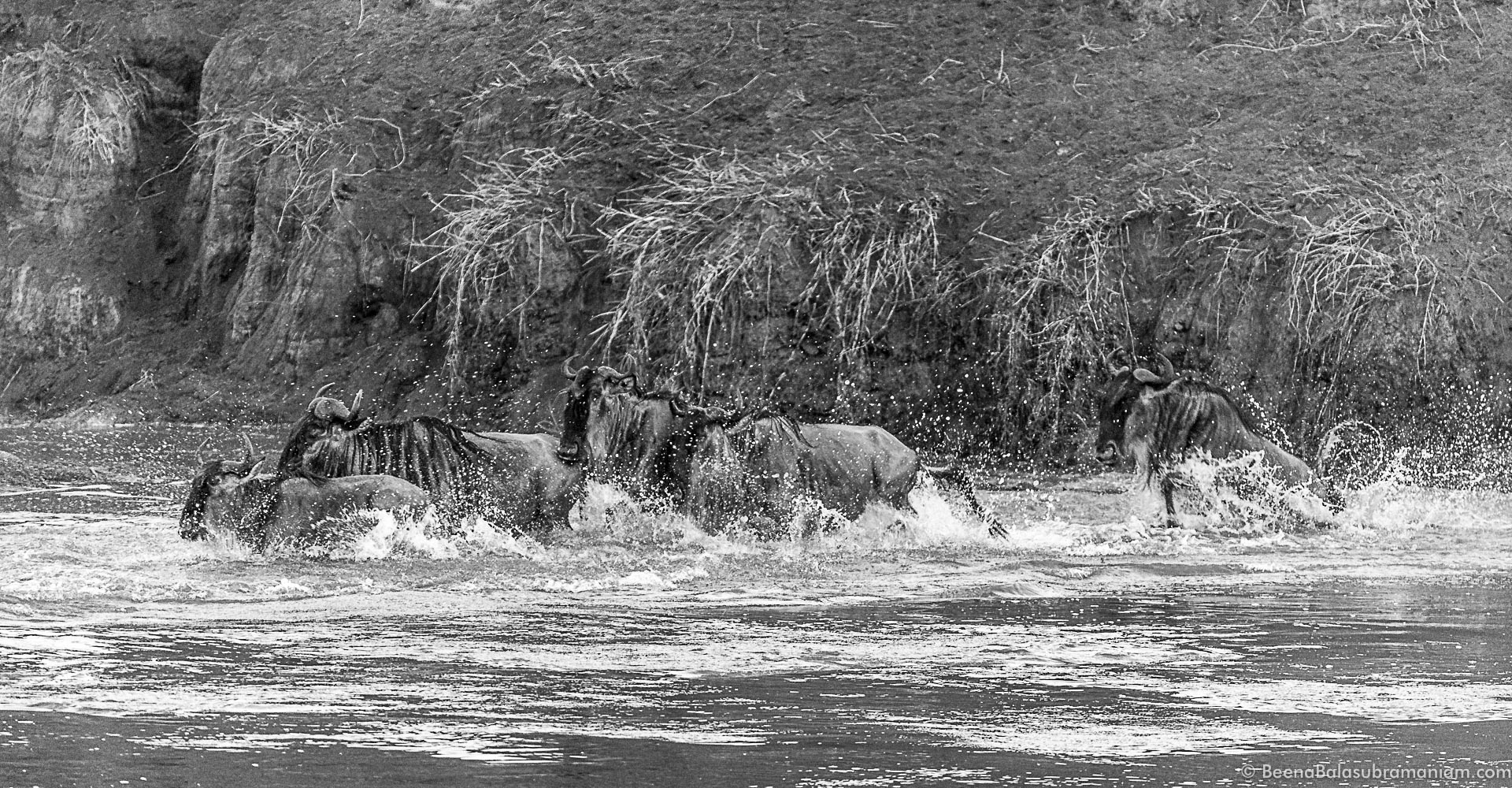
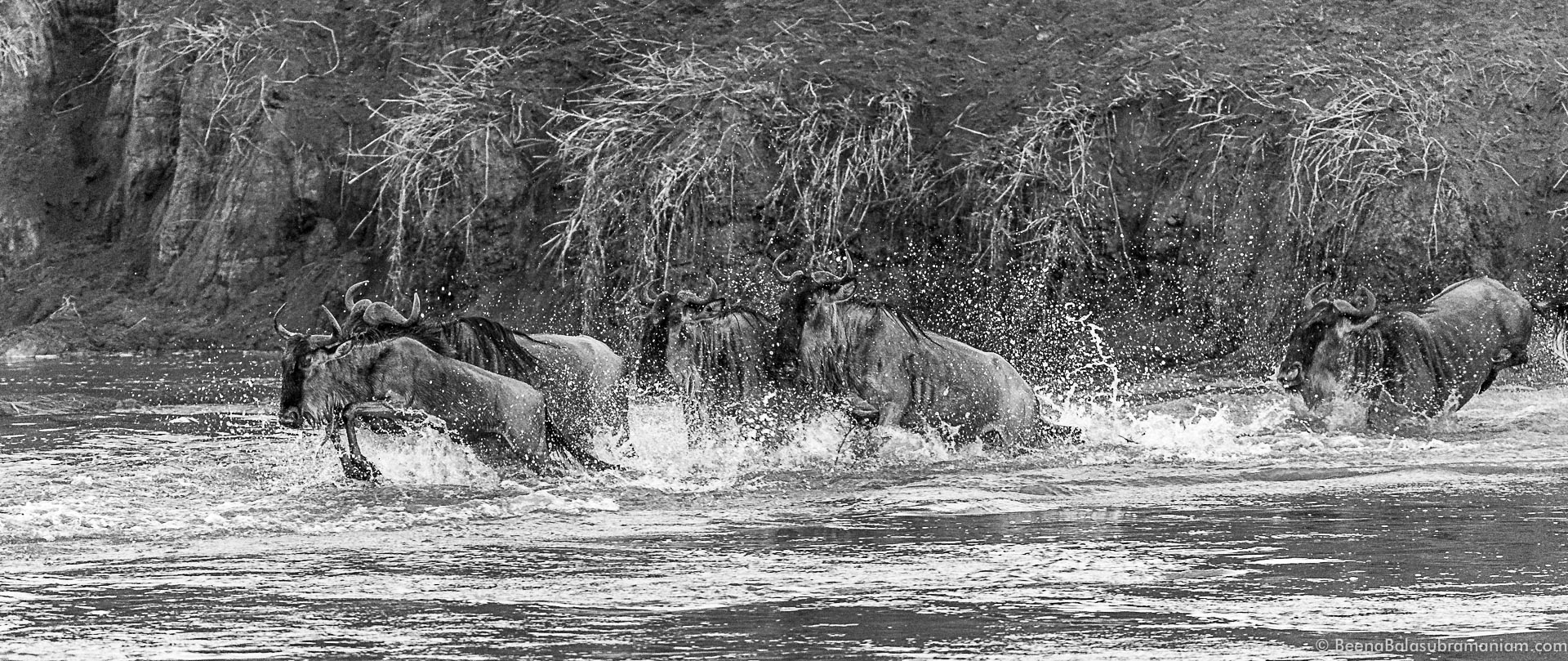
Predators continuously prowl the crossing points – Here a Hyena tries to get at the tired and nervous wilde beast
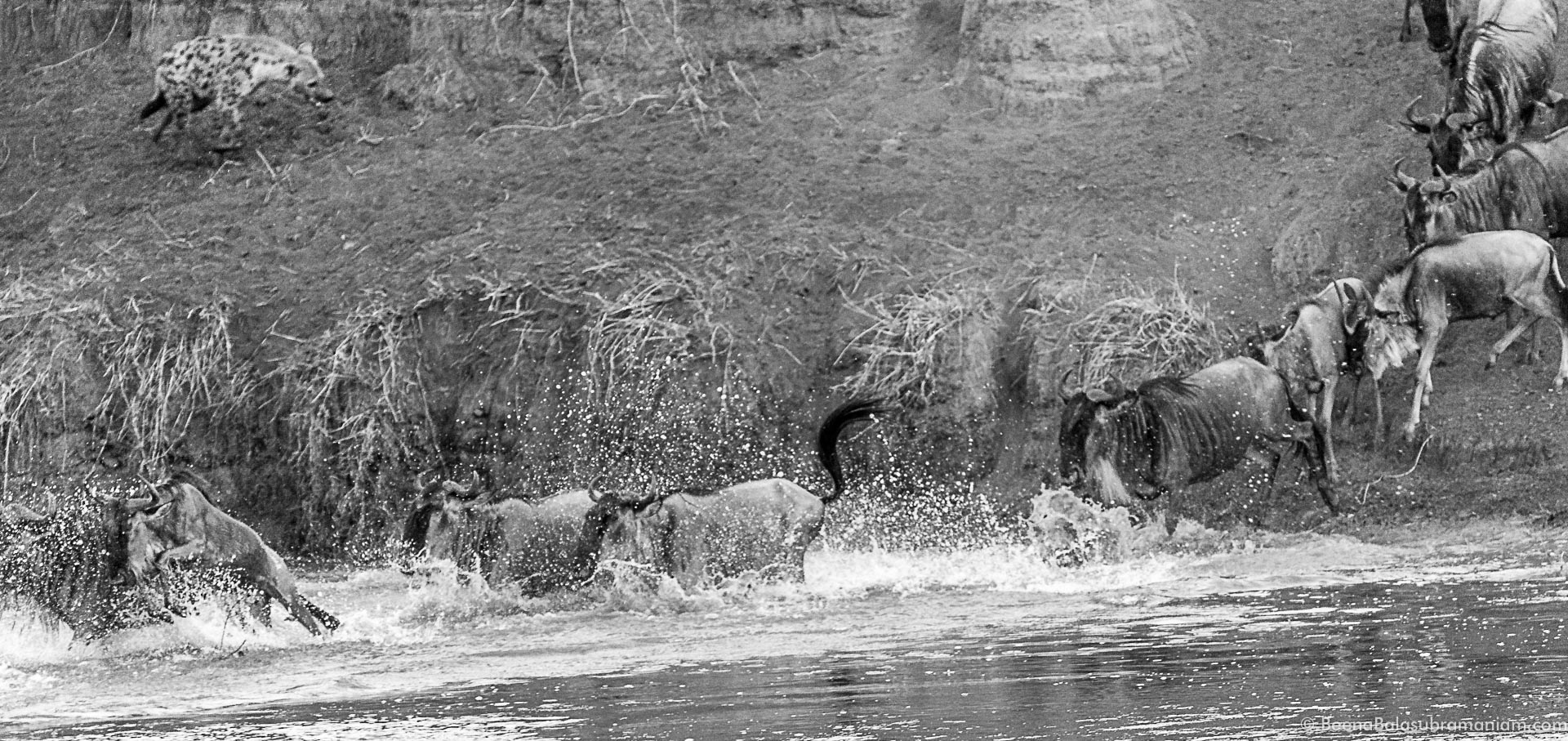
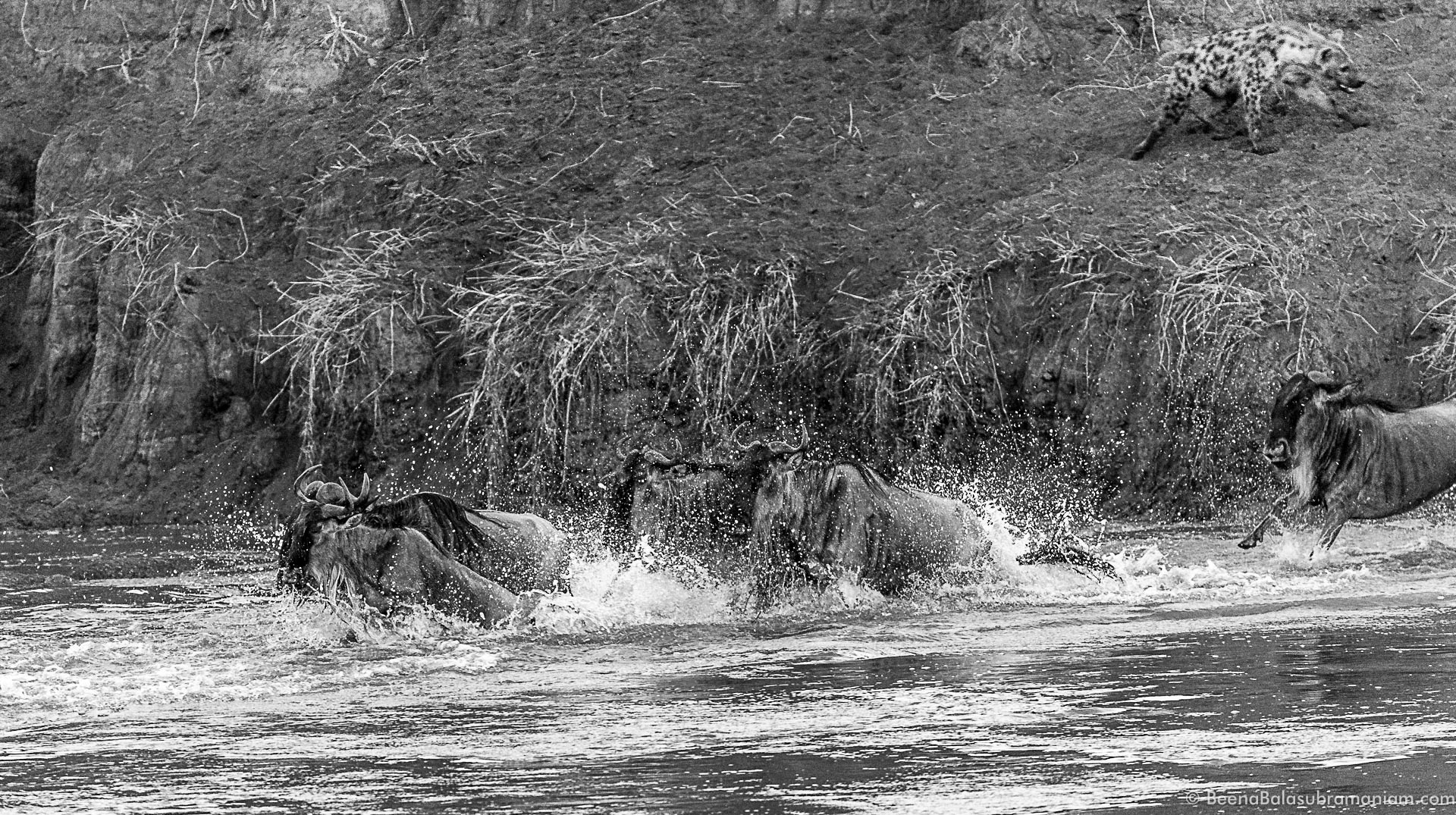
The reaction to predators is just mayhem

Due to panic and the number of animals many wildebeast perish and their carcasses are strewn all over the river
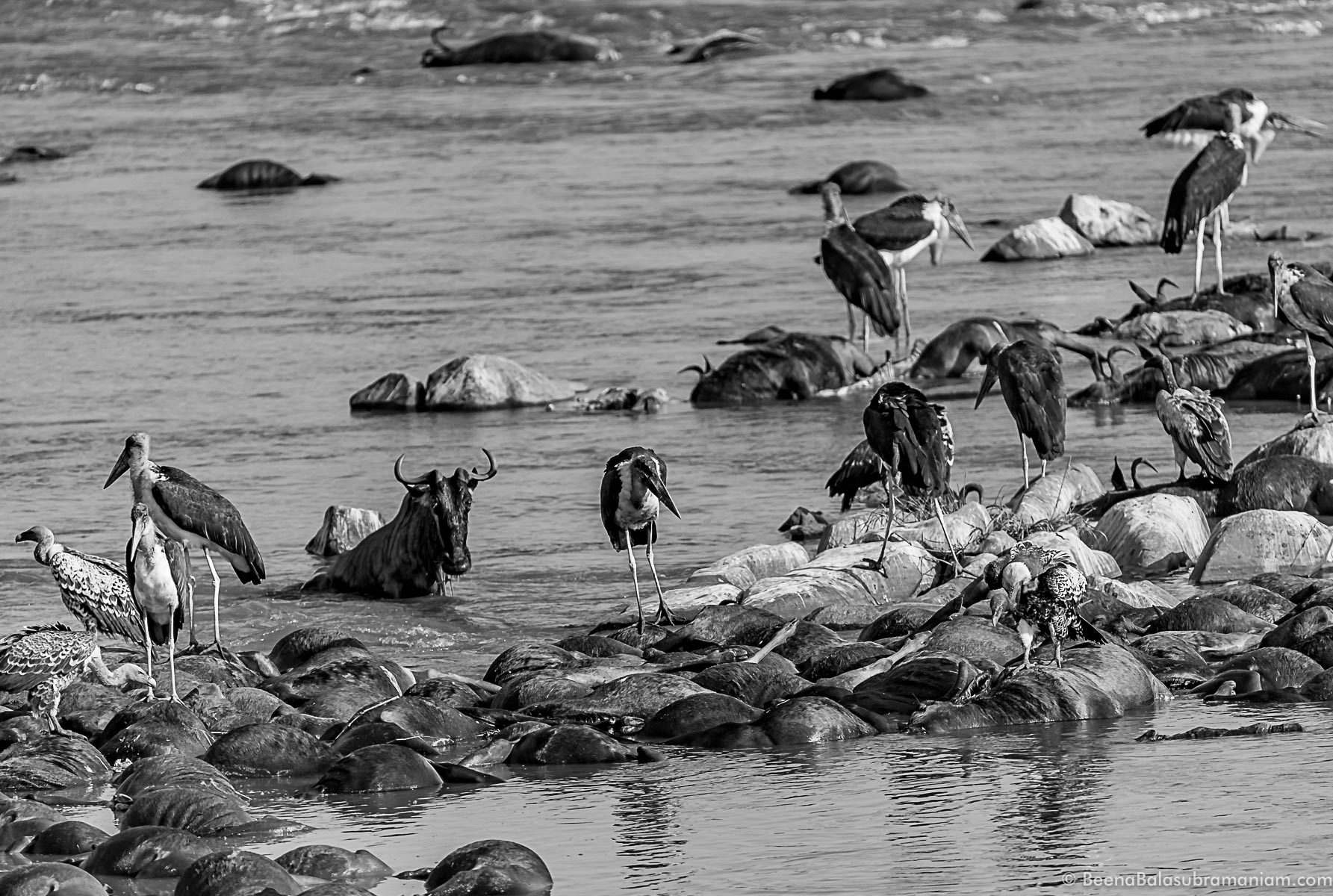
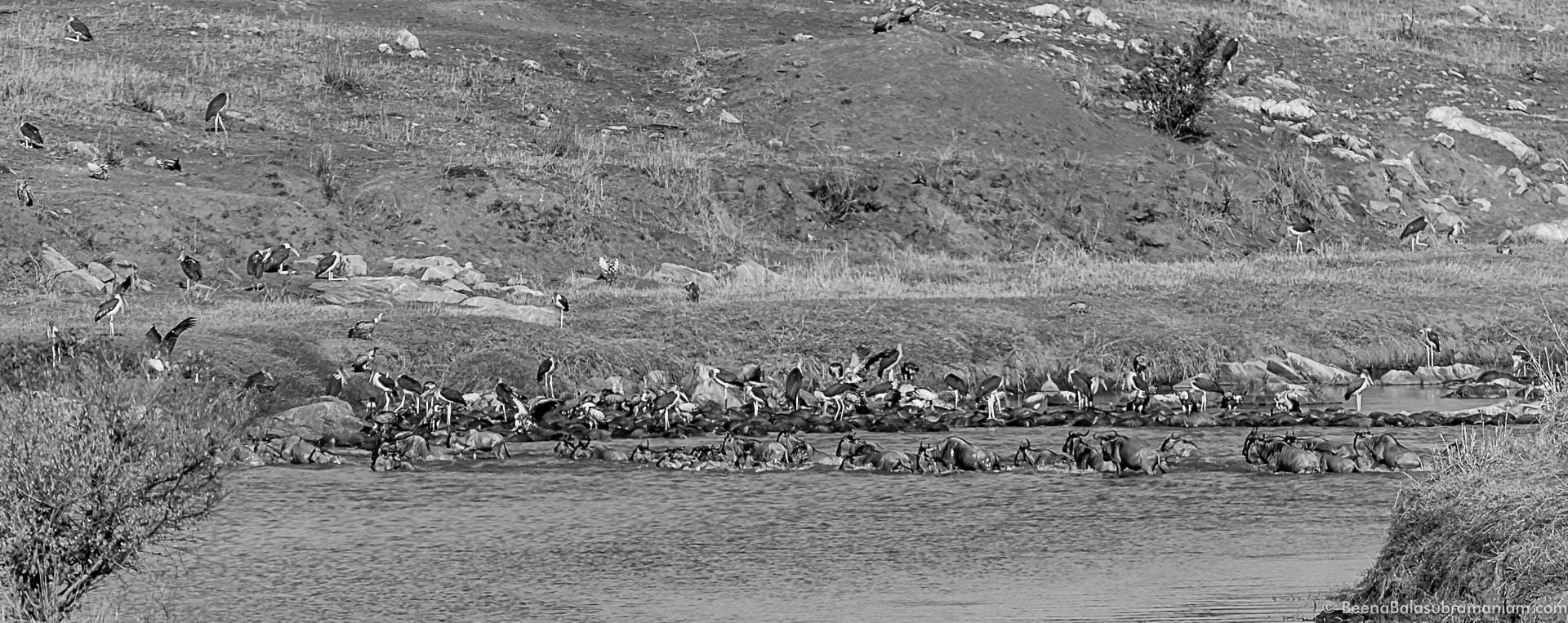
The above image shows a crossing with a backdrop of a lot of carcasses from a previous crossing nearly 4 weeks back. Scavengers like the Maribu stork dot the landscape with the vultures.
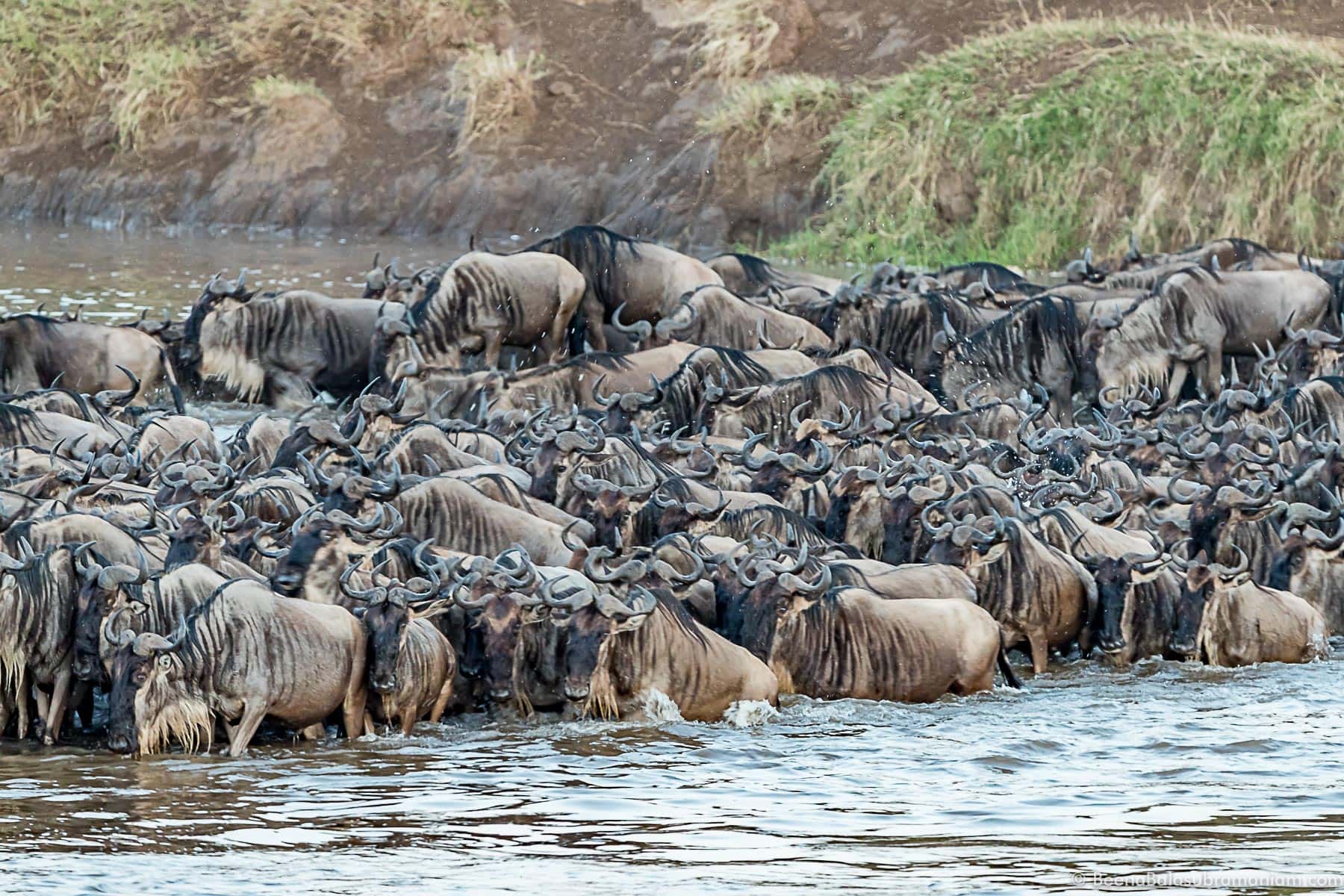
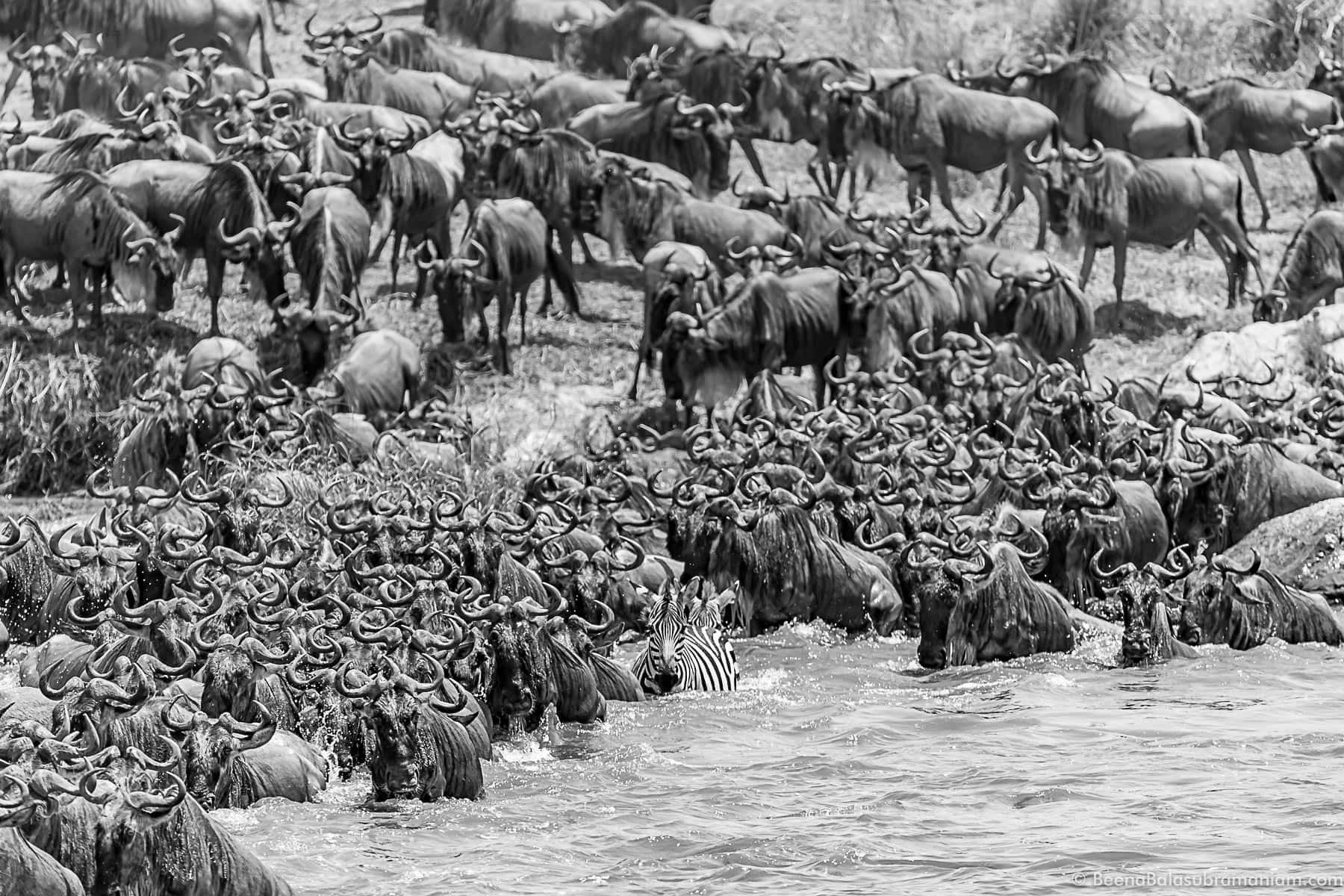
A zebra is a stark contrast to the group of wilde beast
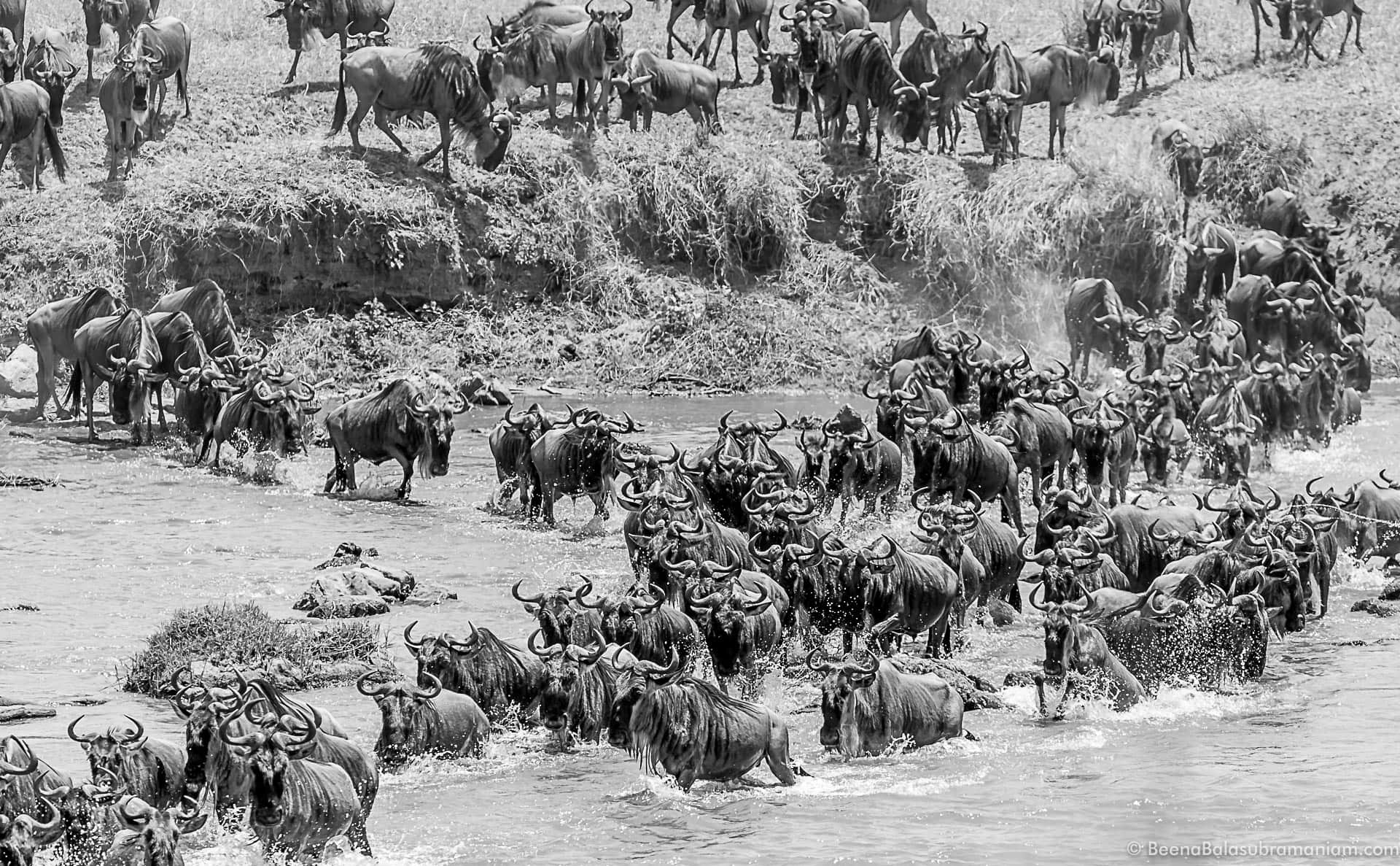
Trying to show you the whole picture of the crossing
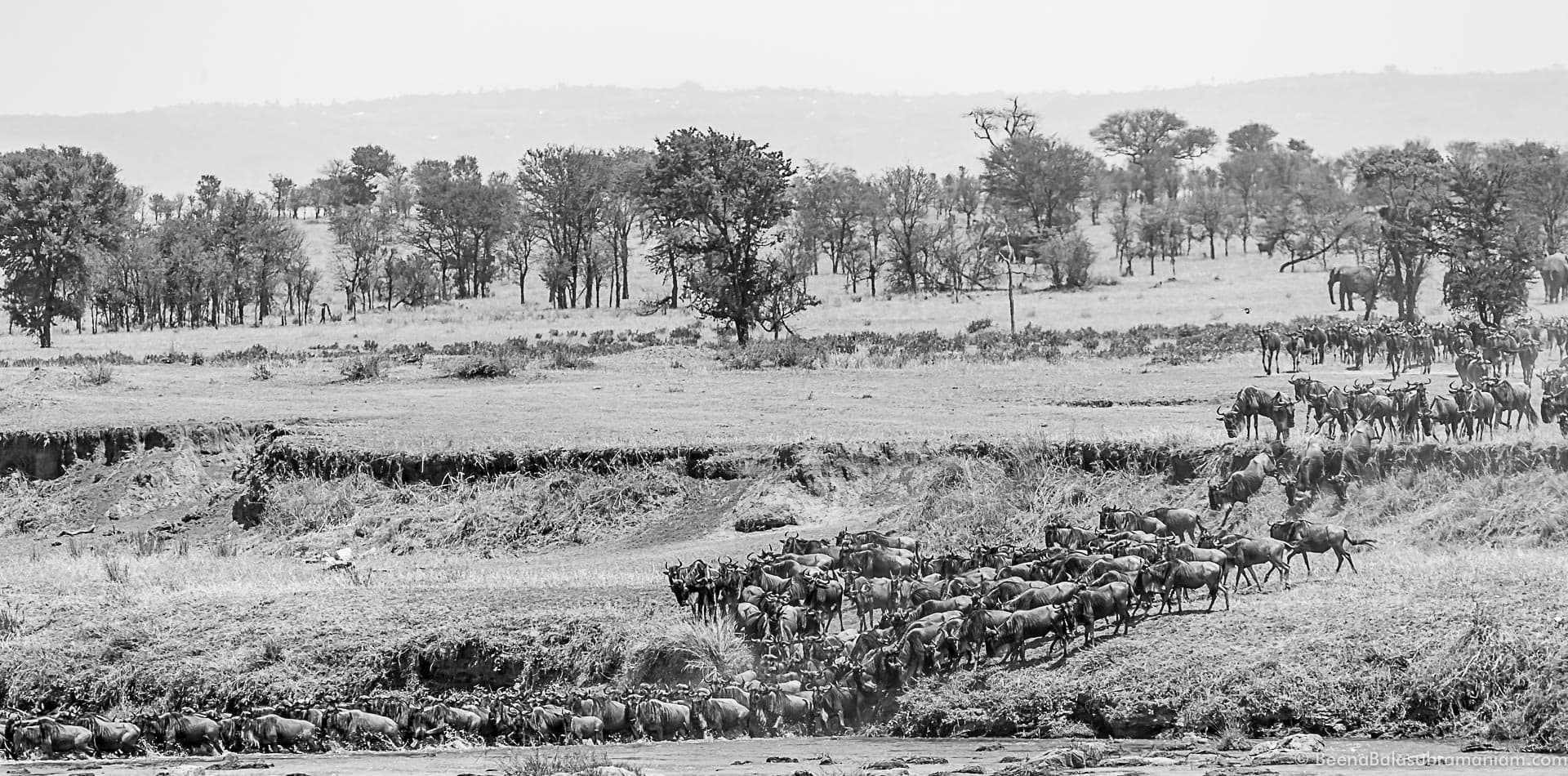
A wide shot of the whole herd
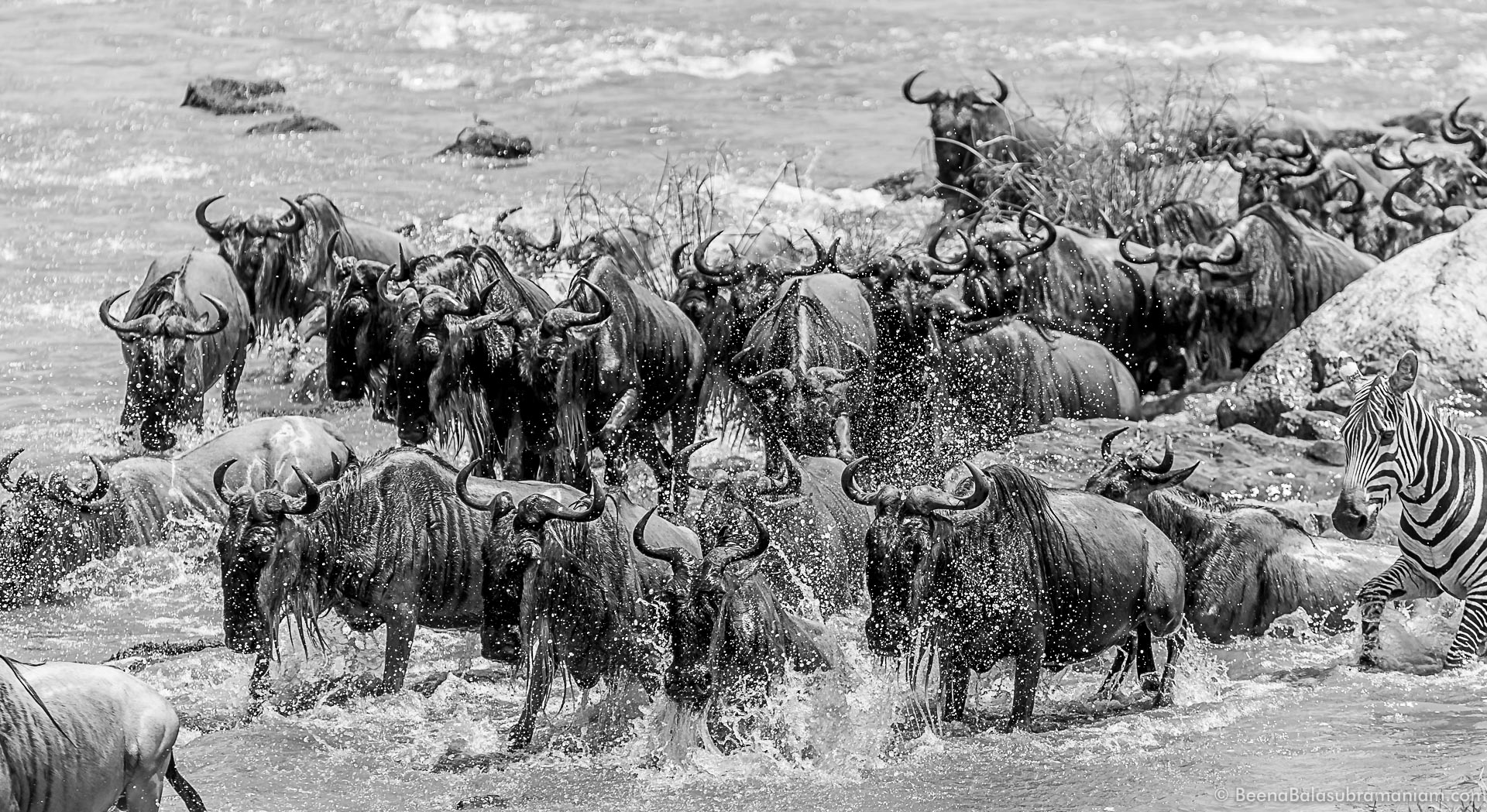
The climb onto the opposite side of the Mara to complete the crossing
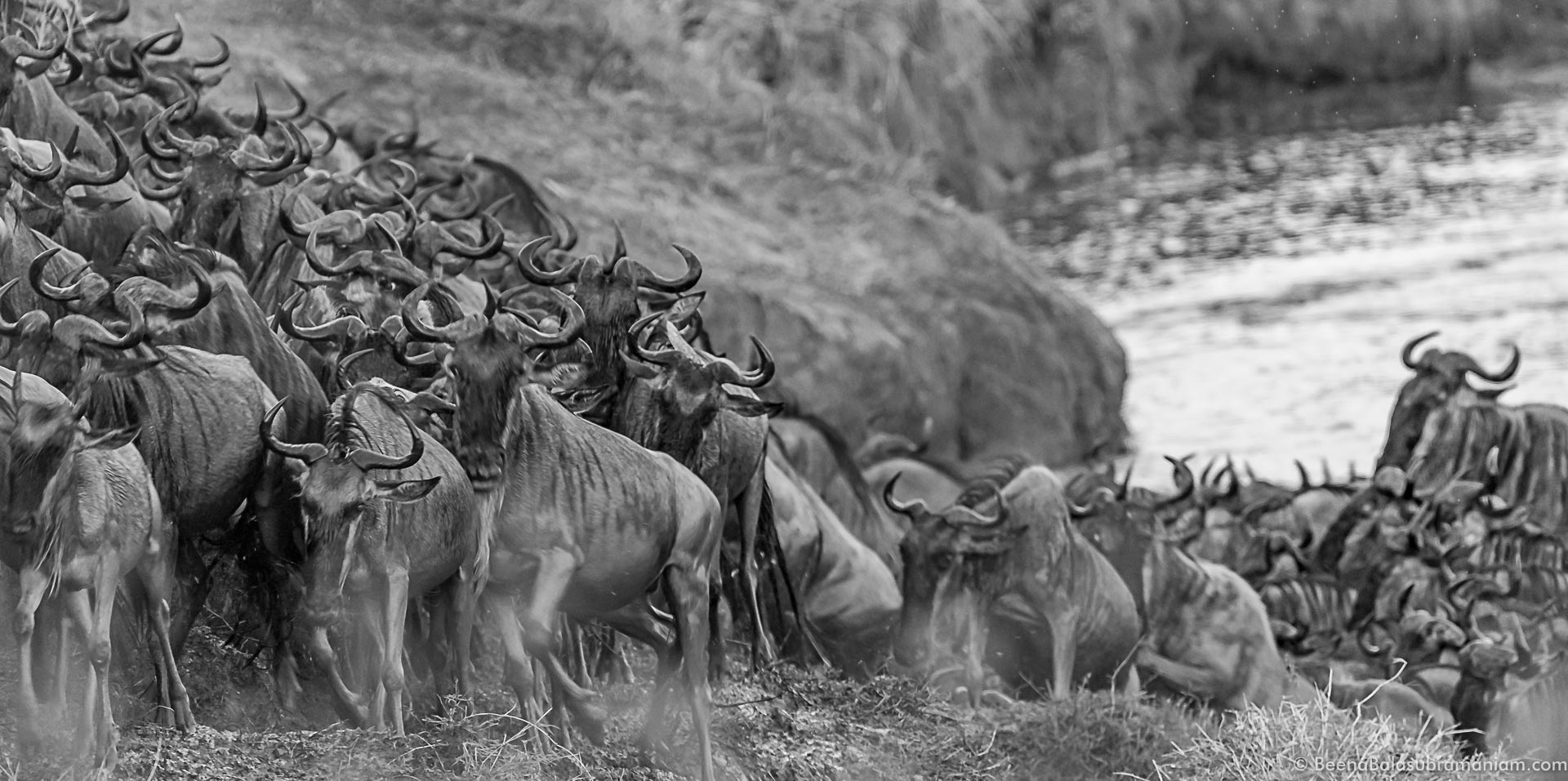
Hope you enjoyed this blog.
Visit the Gallery Migration for more pictures.
Please do leave your feedback its would be most appreciated.





















